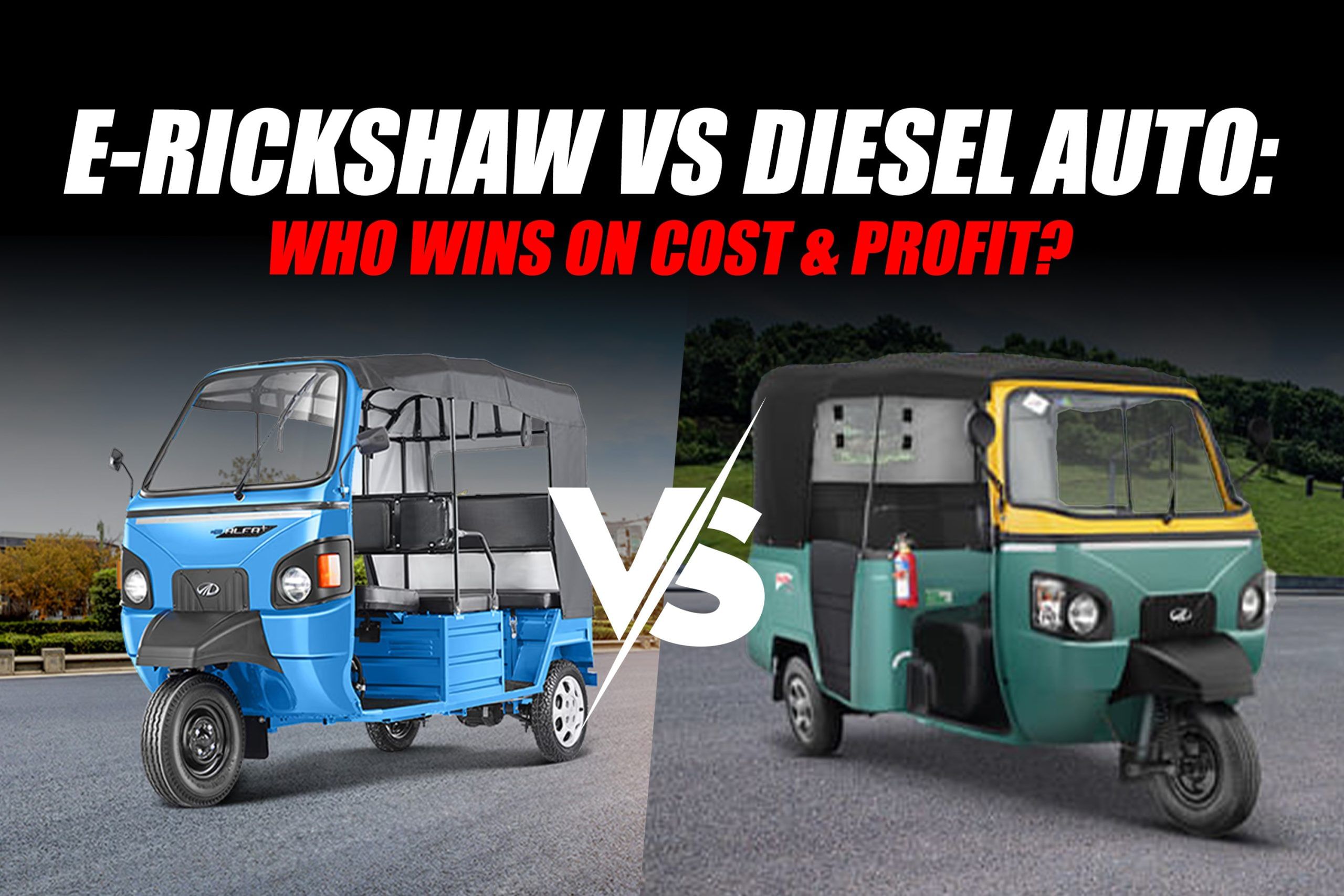In India's transport economy, a living is made every kilometre and every litre of fuel. The growth of electric rickshaws has also forced a serious rethink for small commercial operators who were traditionally dependent on diesel autos. Both autos perform the same function, to transport people efficiently but their economics are vastly different.
1. Market Shift Towards Electrification
Government incentives, stricter emission tests and fluctuating fuel prices are consistently driving the market in this direction for electric alternatives. The electric rickshaw has emerged as a centerpiece of this transformation. It offers less expense in time and money, less mechanical complexity and cleaner air.
But diesel autos maintain a presence where speed, torque and distance are important. Their drivers trust their mechanical endurance and convenience of filling up the tank. Moving to electric is more than an environmental choice to choose the best economic option and profitability determines the winning economic option.
2. Purchase and Registration Costs
An electric rickshaw would cost anywhere between ₹1.3–₹2 lakh, including subsidies from FAME-II as well as state incentives. Lower registration fees and tax exemptions also contribute to its lower cost.
A diesel auto, however, ranges between ₹2.5–₹3.5 lakh, with no subsidy cushion and higher fees due to emission norms.
When “price” connects with “profit,” the electric rickshaw gains the first edge, it saves nearly ₹1.5 lakh before operations even begin.
3. Fuel Efficiency and Daily Expense
A diesel auto delivers around 25–30 km per litre. At approximately ₹90 per litre, each kilometre costs ₹3.00–₹3.60.
A 6–8 unit electricity consumption for 100 km is consumed by an electric rickshaw. At a rate of ₹7 a unit, that amounts to ₹0.50–₹0.60 a km.
This almost 80% cost-cutting in running cost turns the profit equation sharply. For drivers traveling 100 km a day, the savings exceeds ₹250 a day. The debate on auto rickshaw fuel efficiency thus veers strongly in favour of electric.
4. Maintenance and Durability
A diesel vehicle requires routine maintenance like oil changes, filter replacements, clutch plates and engine adjustment. Monthly cost averages between ₹2,000–₹3,000.
An electric three-wheeler has fewer parts in motion and no engine oil. Its monthly running cost rarely crosses ₹700. Every 18–24 months, battery replacement (₹25,000–₹40,000) is needed for lead-acid batteries, although lithium-ion batteries now make it much longer.
Hence, while electric rickshaw profitability partly depends on battery longevity, overall upkeep remains lower in the long term.
5. Profit and Return on Investment
Profit equals earnings minus expenses. Consider 100 km of daily operation:
| Parameter | Diesel Auto | Electric Rickshaw |
| Running Cost/km | ₹3.20 | ₹0.55 |
| Daily Operating Cost | ₹320 | ₹55 |
| Daily Earnings | ₹1,200 | ₹1,000 |
| Net Daily Profit | ₹880 | ₹945 |
Although diesel vehicles can charge marginally higher fares because of their speed and distance capabilities, electric rickshaws achieve far more profit through lower operational costs. For example, in a month, e-rickshaw pilots make around ₹18,000-₹20,000 and diesel auto drivers make approximately ₹15,000-₹17,000 monthly.
To small commercial owners, that ₹3,000 monthly delta can play an important role in long-term viability.
6. Long-Term Viability
An electric rickshaw breaks even in 12–15 months. A diesel vehicle typically takes 20 months. After breakeven, electricity costs are relatively constant, whereas fuel prices keep varying.
The passengers also like quiet, smooth and clean journeys, enhancing occupancy rates. Consequently, E rickshaw business profit gains momentum once the initial investment is recovered.
7. Operational Challenges
Electric mobility is challenged practically. Charging stations remain few in smaller towns. Downtime on charge impacts business day-to-day. Harsh temperatures reduce battery life.
However, technology is evolving everyday. Now, lithium-ion batteries charge faster and last longer. Swappable battery alternatives reduce downtime considerably. Each advancement reinforces the economic case for electric mobility.
Final Analysis
Diesel vehicles remain unbeatable on long distances where rapid refuelling and torque are paramount. But for city frequent driving and short journeys the electric rickshaw offers better economics. It cuts fuel costs, saves maintenance and enhances overall margins. In India's expanding transportation landscape, where efficiency is the key to survival, the electric choice isn't simply cleaner. It's smarter, greener and ultimately, more profitable.
For more articles and news, stay updated with 91trucks. Subscribe to our YouTube channel and follow us on Facebook, Instagram and LinkedIn for the latest videos and updates from the automotive world!
Related Stories:
Making the E-Rickshaw Revolution Gender-Friendly: Needed Support
From Uttar Pradesh to West Bengal: 5 States with Maximum E-Rickshaws









